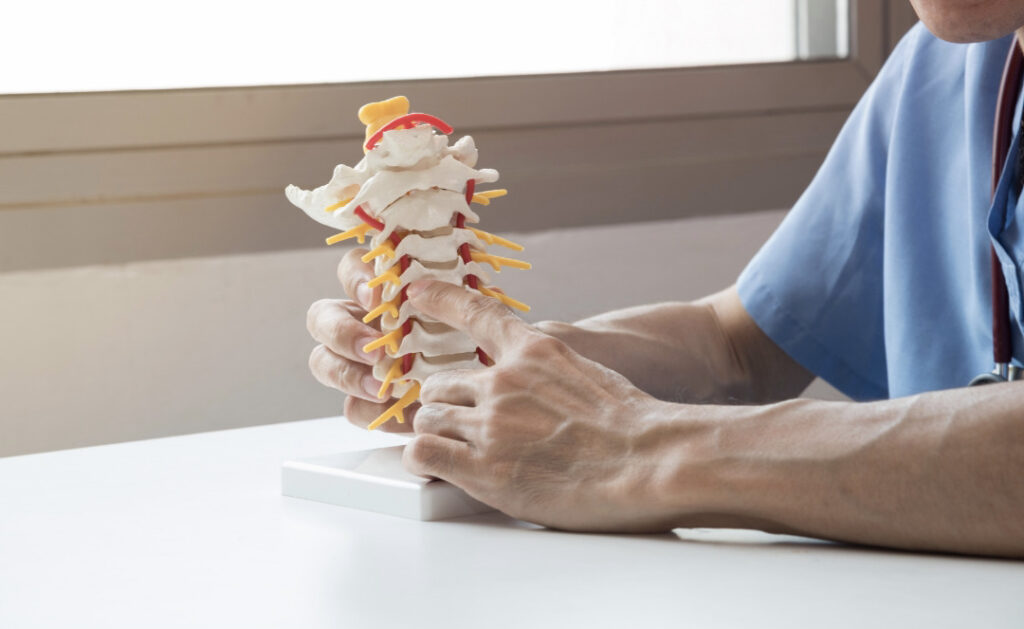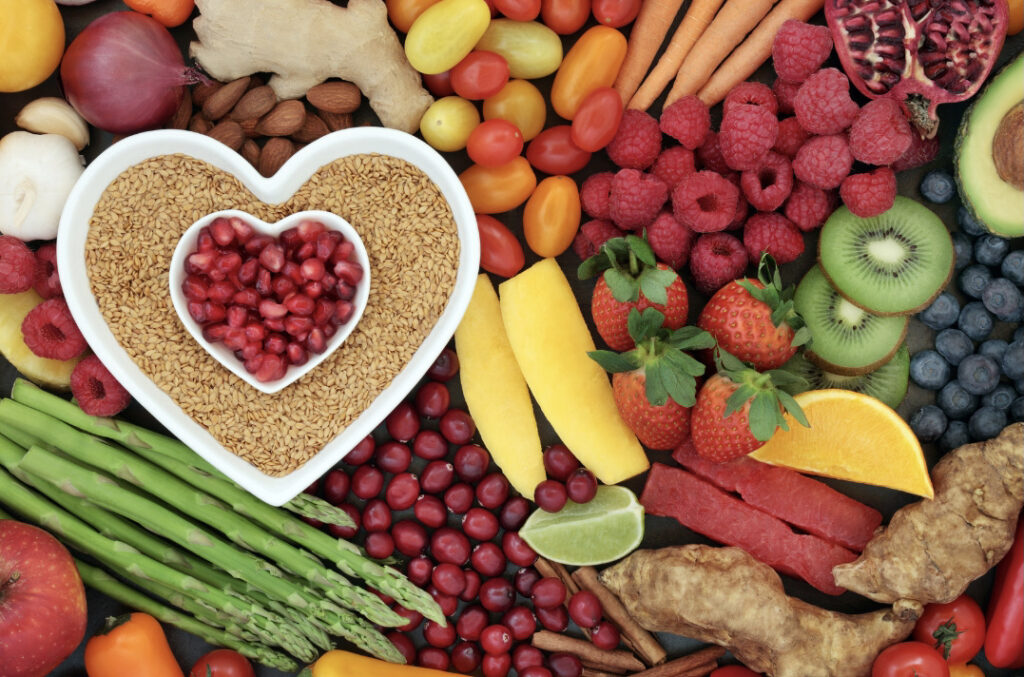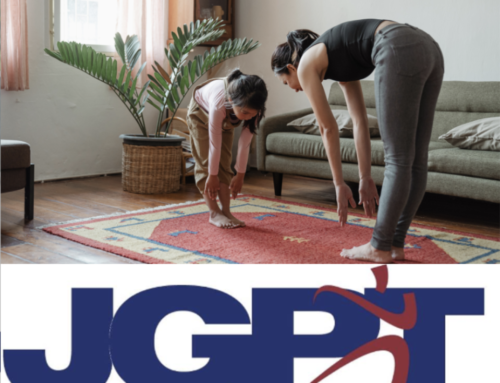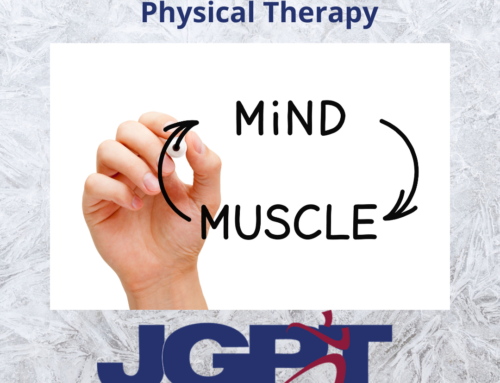Physical Therapy Combined with Proper Nutrition for Spine Health
The experts at John Goetze Physical Therapy are passionate about educating their patients on the overall health of the spine. It is common knowledge that proper exercise and stretching routines will keep your spine healthy; however, many people do not realize that their diet plays a significant role in maintaining a healthy spine. In fact, many people are actually surprised by the impact their diet can have on the spine.
The Spine
The spine is your body’s main support structure, as it allows you to walk, twist, bend, run, sit, and stand. The
vertebrae, which form the spinal canal, protect the spinal cord and nerves. The cartilage in your facet joints allow the vertebrae to rub against each other, which provides strength and elasticity. Discs are located between the vertebrae and play the role of “shock absorbers” and ligaments attach the vertebrae together, which holds the spine in position. Lastly, muscles support the back by helping you move and they play a critical role in protecting the spine.
Proper Diet and Nutrition for a Healthy Back
A healthy diet will reduce back problems in many ways. Additionally, the appropriate nutrition can help heal back injuries much faster. The foods and supplements you consume help nourish the muscles, bones, discs and structures that are part of the spine. Also, water consumption plays a critical role in hydrating the spinal discs.
Read the following suggestions by Kelly Andrews, DC at https://www.spine-health.com/wellness/nutrition-diet-weight-loss/food-thought-diet-and-nutrition-a-healthy-back
 Calcium has received much attention as the most prominent of bone minerals. It is essential for bone health and helps maintain the necessary level of bone mass throughout the lifespan, and especially in old age. Adequate calcium intake is particularly important to help prevent the development of osteoporosis, a disorder characterized by weak and brittle bones that can result in painful vertebral fractures in the spine. Calcium is found in many foods, most popularly in dairy products such as yogurt, cheese, and milk. Other common sources of calcium include dark green leafy vegetables such as kale and bok choy, many legumes, some types of fish such as sardines and salmon (for example, canned with bones), and a variety of other foods such as almonds, oranges, tofu, and blackstrap molasses.
Calcium has received much attention as the most prominent of bone minerals. It is essential for bone health and helps maintain the necessary level of bone mass throughout the lifespan, and especially in old age. Adequate calcium intake is particularly important to help prevent the development of osteoporosis, a disorder characterized by weak and brittle bones that can result in painful vertebral fractures in the spine. Calcium is found in many foods, most popularly in dairy products such as yogurt, cheese, and milk. Other common sources of calcium include dark green leafy vegetables such as kale and bok choy, many legumes, some types of fish such as sardines and salmon (for example, canned with bones), and a variety of other foods such as almonds, oranges, tofu, and blackstrap molasses.
Magnesium is a key mineral in the structure of the bone matrix and is also required for more than 300 biochemical reactions in the body. If blood magnesium levels drop, magnesium will be pulled from the bones. Magnesium deficiency is common and supplementation can assist in maintaining bone density and preventing back problems. This nutrient also helps in relaxing and contracting muscles, making it necessary for strengthening the muscles that support the spine. Magnesium is found in green leafy vegetables, fish, beans, seeds, nuts, whole grains, yogurt, avocados, bananas, and dark chocolate (70% cocoa or higher).
Vitamin D3 helps the body absorb calcium, which is crucial for the development of strong and healthy bones. Without sufficient vitamin D, bones can become thin, brittle, or misshapen. Vitamin D deficiency is common. Levels in the body can be measured with a blood test that can be ordered by your healthcare professional. Vitamin D is found naturally in only a few foods, including fatty fish (salmon), liver (or cod liver oil), and egg yolks. In the U.S., milk and some cereals, juices, and breads are fortified with vitamin D. It can also be attained through nutritional supplementation and time spent in the sun.
Vitamin K2 acts as a director for bone minerals, properly distributing calcium out of the soft tissues and depositing it into bone. It is critical for healthy bone metabolism and is often deficient in the diet. The combination of vitamin K2 and calcium works to help bones in the spine and throughout the body stay strong and healthy. Vitamin K1 is the plant form of vitamin K, which is converted to vitamin K2 by healthy digestive bacteria. Vitamin K2 is found in healthy fats of meats, cheeses, egg yolks, and other dairy products, and K1 is found in green leafy vegetables such as spinach, kale, and broccoli.
Vitamin C is necessary for collagen formation, the substance that holds the body together, found in the bones, muscles, skin and tendons, and is an important part of the process that enables cells to form into tissue. It also functions as an antioxidant. Adequate vitamin C intake is vital for healing injured muscles, tendons, ligaments, and intervertebral discs, as well as for keeping the vertebrae strong. Vitamin C can be found in fruits such as strawberries, kiwi and citrus fruits (oranges, guavas, grapefruits), as well as in many vegetables such as tomatoes, broccoli, spinach, red and green peppers, and sweet potatoes. It is commonly available in supplement form.
Vitamin B12 is required in the formation of the body’s bone-building cells and is necessary for healthy formation of red blood cells in the bone marrow. Vitamin B12 deficiency anemia has been associated with osteoporosis. Vitamin B12 is found in animal proteins such as eggs, fish, poultry or meat products, and dairy products such as milk, yogurt, and cheese. Since vitamin B12 is not found in plants, vegetarians should consider supplementing to prevent anemia.
Iron plays a role in the production of collagen and in the conversion of vitamin D to its active form. It is also a component of hemoglobin and myoglobin, two proteins responsible for delivering oxygen throughout the body, including to the tissues that support the spine. A severe iron deficiency is not common but can result in anemia. Overall, iron is not a key nutrient generally associated with bone health but does contribute to other systems that assist in bone development. Iron is found in many meat products such as liver, pork, fish and shellfish, red meat, and poultry; green leafy vegetables; and lentils; beans; soy; eggs; and whole grains.
If one is not able to incorporate sufficient amounts of certain vitamins and nutrients into the diet through food, nutritional supplements can usually be taken to make up the deficit. Always consult a medical professional before significantly changing your diet or taking nutritional supplements.
Patients at John Goetze Physical Therapy are encouraged to (in addition to their physical therapy plan) have a balanced nutrition plan and drink plenty of water.
References: 1.Calcium: What’s Best for Your Bones and health? T.H. Chan Harvard School of Public Health. http://www.hsph.harvard.edu. Accessed March 1, 2017.



![Tennis Elbow [Lateral Epicondylitis]](https://johngoetzephysicaltherapy.com/wp-content/uploads/2022/01/DA11E9C8-5955-499B-98D2-C75AC277B74A-500x383.png)


![Physical Therapy for Headaches [Migraines]](https://johngoetzephysicaltherapy.com/wp-content/uploads/2021/11/B668156A-47EA-4DB1-B9A5-14C75E323EA7-500x383.png)